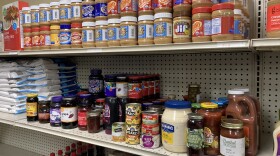We’ve all heard the negative stereotypes of inner-city Milwaukee as a place in crisis. Violence and crime, high rates of foreclosures, problems with drugs are all often linked with the inner city.
But while there are unquestionably problems facing our communities, these issues don’t tell the full story. And there is one organization that is working hard to change perceptions.
LISC Milwaukee, the local chapter of the national group, the Local Initiatives Support Corporation, wants to break down those stereotypes, and help revitalize distressed neighborhoods.
By bringing together community partners and taking key policymakers on tours through the five communities they work in, LISC is showing off what’s to love about Milwaukee.
Christopher Boston, the director of sustainable communities for LISC Milwaukee, notes three notable neighborhoods that Milwaukeeans should be aware about culturally:
- Lindsay Heights Neighborhood, which has the largest peach orchard in the state as well as the best corned beef.
- Clarke Square, home to the Mitchell Domes, a large youth programming organization, and to Henry Longfellow Elementary, one of the largest elementary schools in the state.
- Washington Park's namesake park was once home of the county zoo and was designed by Frederick Olmstead, the architect for Central Park.
LISC also works in the Harambee and Layton Boulevard neighborhoods.
Dawn Hutchison-Weiss, director of communications at LISC, says the organization works with neighborhood leaders to create a plan for their neighborhood on paper. Putting a plan down on paper is powerful, says Hutchison-Weiss.
And while LISC facilitates the planning, she says it is the people who live and work in the neighborhood making the changes.
“Our executive director likes to describe our work as convening, but not controlling,” Boston says. “We’d like to set the table, and bring people to the table. But what gets put on the table is determined by them – they are individuals who are in the kitchen who we think are much better cooks and much better chefs than we are.”
Organization is essential for bringing in additional organizations to help transform the neighborhoods. For example, the Washington Park neighborhood will be receiving 120 Habitat for Humanity homes because the neighborhood is well organized.
The group will host its second annual community development symposium, called “Whole Neighborhoods: One Milwaukee,” on Saturday, October 26th.




